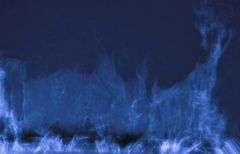Polar Crown Prominences

Warning: Material contained in this story may make you wish to become a solar physicist. Japan's Hinode spacecraft, launched in 2006 on a mission to study the sun, is beaming back movies that astonish even seasoned investigators.
"That was a polar crown prominence recorded by Hinode on Nov. 30, 2006," says Dr. Thomas Berger of Lockheed Martin's Advanced Technology Center in Palo Alto, California. "It is a curved wall of 10,000o plasma about 90,000 km long and 30,000 km tall." A stack of planets three Earths high would barely make it to the top.
Solar astronomers have seen prominences like this before, thousands of them, but never so clearly. The new view is challenging long-held ideas: In the past, researchers thought of prominences as mainly static structures, held motionless above the surface of the sun by magnetic force fields. "Now we know those ideas are too simple. Just watch the movie!"
Berger lists the surprises:
1. "There are dark tadpole-shaped plumes rising up from the base of the prominence. These have never been seen before and we're not sure what they are."
2. "Narrow streams of plasma at the top of the prominence are constantly falling back to the bottom, much like a waterfall." Mysteriously, the streams plummet faster than ambient magnetic forces seem to allow.
3. "Finally, within the wall itself, there are swirls and vortices" bearing an eerie resemblance to van Gogh's surreal Starry Night.
The inescapable conclusion: "There's no such thing as a static prominence." Furthermore, he says, "we don't understand how the sun's magnetic field is doing all these things."
Berger is co-Investigator for Hinode's Solar Optical Telescope (SOT), which makes such movies on a regular basis. "SOT can see details on the sun as small as a few hundred kilometers wide. Its view is never blurred by Earth's atmosphere so it can make movies up to 12 hours long with perfect clarity." The growing archive of movies is a treasure trove for researchers.
It turns out that polar crown prominences pop up almost every day. They occupy a ring (or "crown") around the sun's poles bracketed approximately by solar latitudes 60o and 70o. Geometrically, the crowns resemble the auroral ovals of Earth. Instead of Northern Lights, however, the sun's ovals are filled with dancing sheets of plasma.
Studying polar crown prominences could be a key to forecasting space weather, says Berger. The central sheets form between regions of opposite-polarity magnetic field. That's significant because opposite magnetic fields bumping together tend to explode—a process physicists call "reconnection." Polar crown prominences are thus poised to erupt and often do, forming the cores of billion-ton coronal mass ejections. "Hinode allows us to watch the process in action."
Astronomers aren't the only ones watching; nuclear physicists are paying attention, too. For decades, physicists and engineers have struggled to contain hot plasma in fusion reactors using magnetic fields. Watching the sun manipulate plasma via magnetism may teach them some valuable tricks and, eventually, help bring the power of stars down to Earth.
"These data are leading solar physicists to reexamine theories of prominence dynamics and will certainly lead to new and exciting breakthroughs," believes Berger.
Answers are in the offing. But first, a few more movies: #1, #2, #3.
Source: by Dr. Tony Phillips, Science@NASA




















